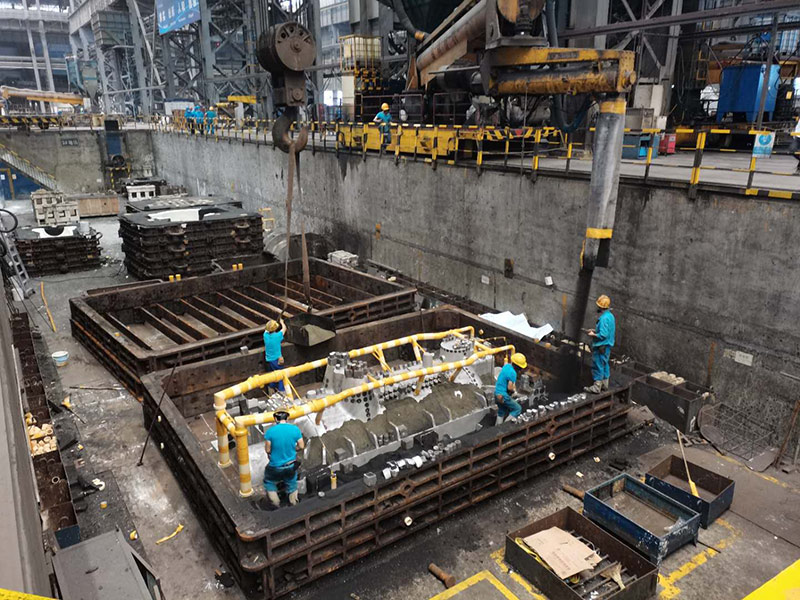Sand Preparation in Foundry A Critical Process for Quality Casting
The foundry industry plays a vital role in the manufacturing of various components and products used across numerous sectors, including automotive, aerospace, and machinery. Among the essential processes within a foundry is sand preparation, which fundamentally influences the quality of castings produced. Sand is the primary material used to create molds, and its preparation is crucial to achieving desirable mechanical properties in finished products.
Understanding Sand Types and Their Characteristics
In foundry applications, four primary types of sand are typically utilized silica sand, zircon sand, olivine sand, and chromite sand. Silica sand is the most common due to its favorable thermal properties and availability, while zircon sand offers high temperature resistance and is often used for specialized applications. Olivine sand is recognized for its low thermal expansion and ability to reduce unwanted reactions with molten metal, making it suitable for high-quality castings. Chromite sand, while more expensive, provides excellent stability and is used for creating molds that withstand high pressures.
Each type of sand has unique characteristics that influence mold performance, such as grain size, shape, and surface texture. The preparation process must take these factors into account to ensure that the molding sand exhibits the right properties for the casting process.
The Sand Preparation Process
1. Sand Acquisition and Conditioning The first step in sand preparation involves sourcing high-quality raw materials. Once acquired, the sand undergoes conditioning, where it is screened to remove impurities like dust and oversized grains that could compromise mold integrity.
2. Additives Inclusion Depending on the specific requirements of the casting process, different additives may be introduced. These can include bonding agents, plasticizers, and chemical hardeners. Each additive is selected based on the desired properties of the final casting, such as strength, flexibility, and thermal stability.
sand preparation in foundry

3. Moisture Control Moisture content is critical in sand preparation. The right balance must be achieved since moisture facilitates the binding of sand particles, enhancing mold strength. Typically, sand should have a moisture content of around 2-4%. Excessive moisture can lead to defects like gas porosity in the final castings, so monitoring and controlling moisture levels is vital.
4. Mixing and Recycling After conditioning and additive inclusion, the sand is thoroughly mixed to ensure uniform distribution. Foundries often employ a recycling process to reclaim sand from previously used molds. This not only reduces material costs but also limits environmental waste. However, recycled sand must be properly treated and tested to ensure it meets quality standards.
5. Quality Control The final stage of sand preparation involves rigorous quality control measures. This includes testing the sand for granulation, permeability, and compressive strength. Foundries utilize various laboratory techniques, such as grain size analysis and moldability tests, to assess the suitability of the prepared sand. Consistent quality is crucial to maintaining production efficiency and achieving high-quality castings.
The Impact of Sand Preparation on Casting Quality
The preparation of sand directly affects the successful production of castings. Properly prepared sand leads to molds that can withstand the thermal shock of molten metal and can produce accurate and detailed features in the casting. Conversely, poorly prepared sand can result in defects like surface imperfections, inconsistent dimensional accuracy, and compromised mechanical properties.
Moreover, advancements in sand preparation technologies, such as automated mixing systems and real-time quality monitoring, have enhanced efficiency and product consistency in modern foundries. These innovations allow for quicker response to any deviations in sand quality, ensuring that casting operations run smoothly and effectively.
Conclusion
In summary, sand preparation in foundry operations is a fundamental process that significantly impacts the quality and efficiency of metal casting. By understanding the various types of sand, controlling the preparation stages meticulously, and implementing effective quality control measures, foundries can ensure the production of high-quality castings that meet the industry's demanding specifications. As technology continues to evolve, the methods used in sand preparation will likely become even more sophisticated, further improving the foundry industry's capability to produce superior products.
Post time:Ліст . 08, 2024 20:01
Next:sand used in foundry
